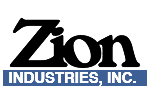Powdered Metal Process vs. Forged for Metalworking
When designing and manufacturing a metal part, the method of fabrication can have a lasting impact on its strength, durability, and longevity and cost. Two common processes for producing metal parts are powdered-metal and forging, both with their unique benefits and drawbacks.
Forging is the legacy process, starting with a billet of steel formed into a shape by applying pressure with either a hammer or press. Metals can be forged “cold” or “hot” with the process chosen based on complexity of the part, how close to finish size the part must be after forging and the number of parts being produced.
In contrast, powder metallurgy is a newer process, with mass production of PM products beginning in the mid- 20th century. Powdered metal starts with a fine metallic powder consisting of iron compounds and carbon. This powder is combined with other alloying agents such as copper or nickel and frequently a binding agent that helps hold it together after being pressed into a mold and then heated or sintered to fuse all the materials together. During sintering, the binding agent burns off, leaving just the alloying agents in a homogeneous condition in the form of the desired piece.
Each technique has unique applications and can be used to manufacture high-quality parts in a variety of industries. No matter the metalworking process, added hardness and wear resistance provided through induction heat treating can improve part hardness, toughness and/or longevity in a given application.
Powdered Metal vs. Forged: Benefits
Powder Metal Forming
Depending on the complexity and level of hardness necessary for a part, there can be significant benefits to using powdered metallurgy for production.
Cost savings and high volume capacity are often the most significant manufacturing advantage of using powdered metals. Production is efficient with little to no material waste or additional machining. Unused powders are recycled back into the creation of additional powdered metal parts.
The powder metal forming method is faster too, often without the need for secondary machining operations, like chamfering or deburring, the manufacturing process and timeframe is considerably reduced.
Forming parts within a mold allows powdered metal parts to be more intricate. Aspects like irregular curves or holes, key-ways, flat-sides, splines or square holes are easily produced without additional machining operations.
Typical powdered metallurgy applications are sued for low impact applications such as gears, sprockets, automotive engine parts or other parts that require high volume production at low costs.
Forged Metal
The primary benefit of forged metal is its superior strength in comparison to other processes including casting, powder metal and even machining from bar stock.
Because of the way a part is formed through forging, the surface and internal structure is denser than other methods, improving strength characteristics.
Depending on the application for the component, forging may be the preferred method over methods like casting, powder metal and machining from bar stock. While forged metal parts will produce some scrap due to required secondary machining operations, they are generally tougher, and able to handle impact and bending loads better than alternative methods.
Automotive axles, spindles and suspension parts, earth moving and mining components that are subject to extreme wear and impact are some examples of parts best manufactured through the forging process.
Powdered Metal vs. Forged: Induction Heating
Whether a part has been formed through a forging process or powdered metal sintering, induction heat treating can enhance their inherent benefits.
Despite the exceptional strength of forged parts, increased hardness can help assure a part performs better in high impact or heavy load applications.
Powdered metals can also be improved through the induction heat treating process. parts can last longer against wear with the addition of induction heating to critical areas.
Zion’s team is experienced in the unique application of induction heat treating to every formed metal type, delivering consistent parts with increased hardness and better wear resistance. Give us a call at 330-483-4650 or contact us to learn how we can strengthen your next part project.
